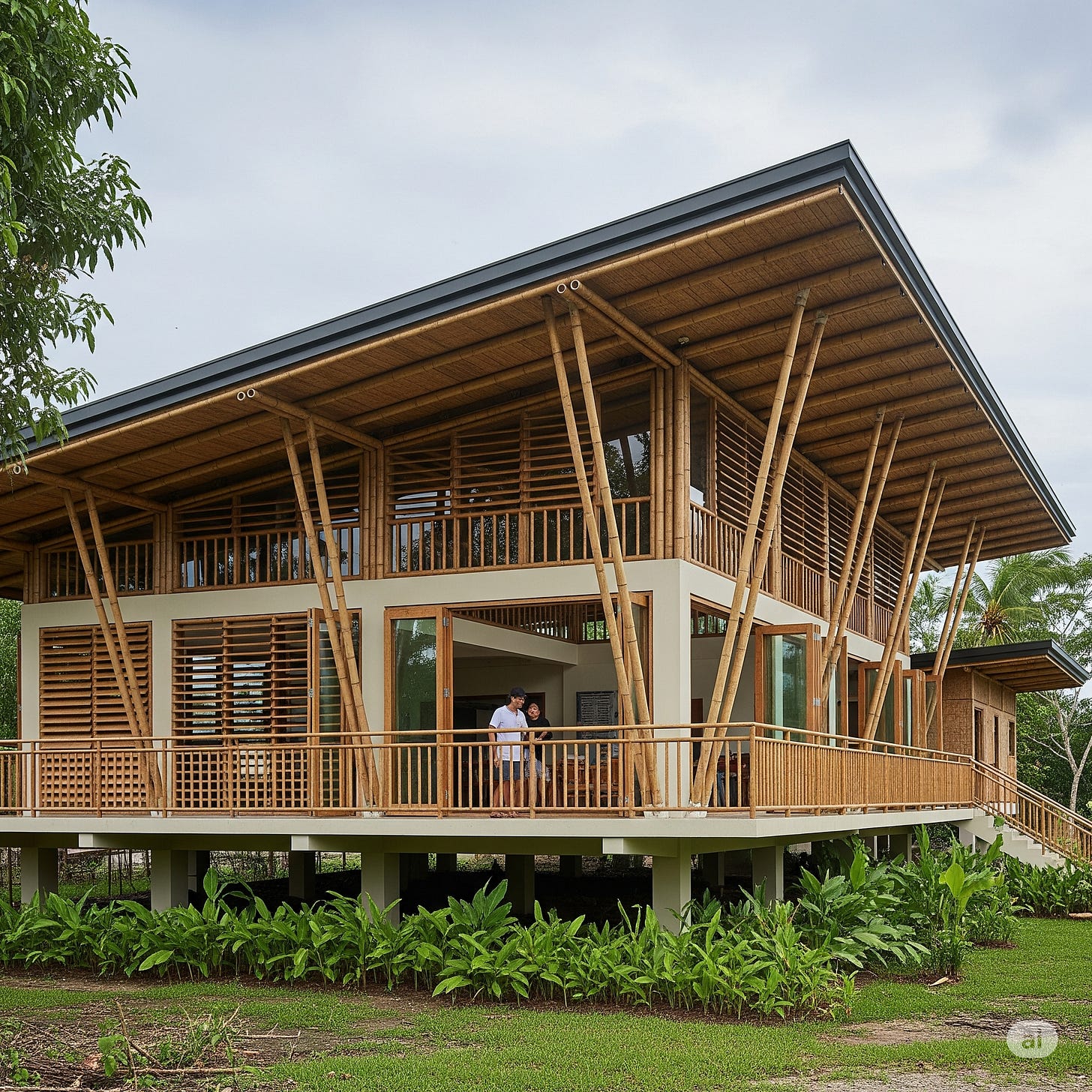Designing for Disaster: Why Resilient Architecture is Critical for the Future of Philippine Development
With climate change intensifying these disasters, resilient architecture is no longer optional—it’s essential for sustainable development.
In the Philippines, natural disasters aren't an occasional risk—they are a reality. Every year, the country faces typhoons, earthquakes, floods, and volcanic eruptions, all posing serious threats to lives, homes, and infrastructure. With climate change intensifying these disasters, resilient architecture is no longer optional—it’s essential for sustainable development.
The Urgent Need for Resilient Architecture
According to the World Risk Index, the Philippines consistently ranks among the top countries vulnerable to natural disasters. In recent years, devastating events like Super Typhoon Yolanda (Haiyan) and frequent earthquakes have illustrated just how important disaster-resilient buildings are. Investing in resilient architecture protects lives, reduces economic losses, and accelerates post-disaster recovery.
Common Design Oversights Leading to Vulnerability
Despite clear evidence of risks, many buildings in the Philippines still lack resilience due to:
Poor Structural Design: Buildings often lack adequate reinforcement against earthquakes and strong winds.
Inadequate Site Planning: Structures built without considering flooding zones, landslide risks, or proximity to fault lines.
Use of Substandard Materials: Cost-cutting practices sometimes prioritize short-term savings over long-term safety and durability.
Insufficient Regulations and Enforcement: Weak implementation of building codes allows for unsafe construction practices.
Principles of Resilient Architecture for the Philippines
To effectively protect communities, resilient architecture should incorporate:
Site-Specific Planning: Assess and design according to local disaster risks such as flooding or earthquakes.
Structural Integrity: Use reinforced concrete, steel framing, and deep foundations to withstand seismic activities and high winds.
Elevated Designs: Implement elevated floors and flood-proofing techniques to prevent damage from floods and storm surges.
Sustainable and Durable Materials: Choose materials that are resilient, low-maintenance, and sustainably sourced.
Flexibility and Adaptability: Design structures that can be easily repaired or repurposed after disasters.
Local Success Stories: Learning from Experience
Several projects demonstrate the value of resilient design:
Storm-Resilient Schools (Eastern Visayas): Post-Yolanda schools were rebuilt with reinforced roofing, elevated floors, and structural bracing, significantly improving disaster readiness.
Earthquake-Resistant Condominiums (Metro Manila): Newer high-rise developments incorporate advanced seismic dampening technologies, safeguarding residents and investments.
These projects have set benchmarks, showing that resilient architecture saves lives and protects assets.
Integrating Disaster Resilience into Architectural Planning
Adopt a clear, structured approach to resilient design:
Risk Assessment: Thoroughly evaluate local risks through geological and meteorological data.
Collaborative Design: Involve architects, engineers, urban planners, and disaster experts from the project's inception.
Regulatory Alignment: Design projects that not only comply with, but exceed, the Philippine Building Code standards.
Continuous Review and Improvement: Regularly update designs based on new disaster insights and emerging technologies.
Resilient Architecture Implementation Roadmap
Here's how architects and developers can practically integrate disaster resilience:
Initial Training: Educate design and engineering teams on resilience principles and methods.
Risk Evaluation Workshops: Conduct site-specific disaster risk assessments before starting any design.
Pilot Projects: Start with smaller, manageable projects to demonstrate effectiveness and learn best practices.
Scale and Standardize: Gradually implement resilient strategies across all developments, creating standardized guidelines.
Resilient architecture is not merely an ethical responsibility—it’s an economic necessity for the Philippines. By embracing resilience in architectural planning, we can build safer, stronger communities, better equipped to withstand and recover from natural disasters.
Ready to build resilience into your next project? Contact UODC Architects today for a consultation on creating disaster-resilient designs tailored specifically to your needs. Are your current projects truly resilient, ready to protect your community and investments from the next disaster?


